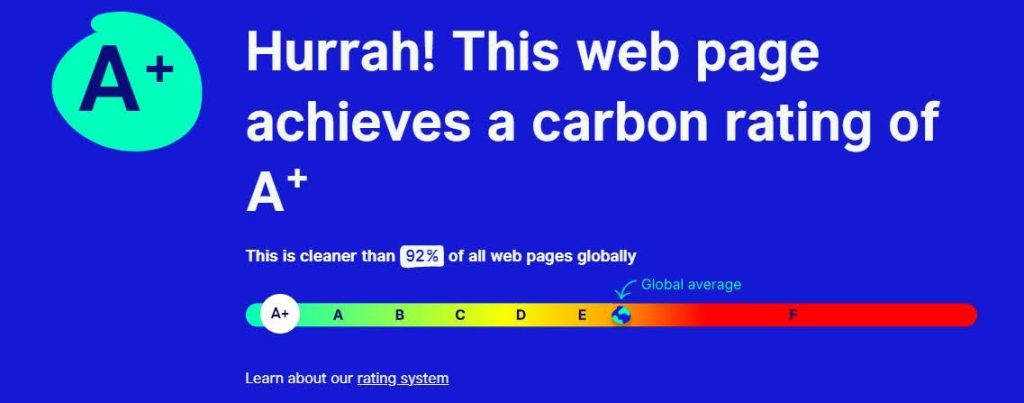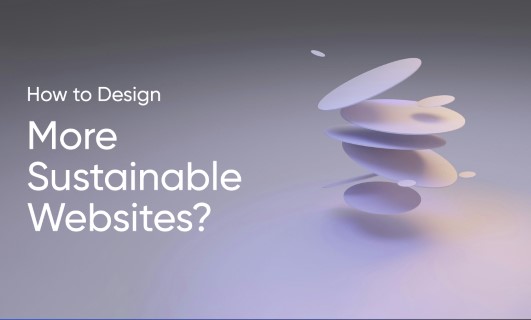Table of Contents
Overlooking the virtual essence of the internet, people often miss the tangible consequences it bears. Believe it or not, virtual activities, like browsing websites, can negatively impact the environment. Websites, in fact, contribute to the carbon footprint because the internet consumes a significant amount of electricity. As a result, billions of devices surfing the web, and servers store massive amounts of data.
According to the carbon calculator Website Carbon, every page viewed on an average website produces 1.76g of CO2. Assume for the moment that emissions from websites are double that of vehicles. The most popular websites, like YouTube, can produce an astounding 702 million kg of CO2 a year. That’s a lot! Surprisingly, these facts aren’t widely known, but they should really be.
Find out what it means to build a more sustainable website and where to start by reading on. These suggestions will help you increase the efficiency of your website.
What Are Sustainable Websites Really?
Here’s a surprising fact: the internet significantly adds to global greenhouse gas emissions. How come? Every website is hosted on servers in what is referred to as data centres. These servers use significant energy when handling data. As they operate, they generate intense heat, necessitating comprehensive cooling systems that, in turn, demand even more power.

So, a sustainable website is basically a superhero site that tackles this problem. How? By making it simpler, more compact, and far more energy-efficient through the use of intelligent design approaches. It’s like going on a digital diet for the planet! One clever method is to make each web page’s file smaller. Why? Because smaller files need less energy to load. Sustainable design isn’t just about saving the Earth; it’s also about making websites high-performing and easy to use.
Take that awesome font you love. Sure, it looks fantastic, but is there a font that’s easy going to the planet? And does the site really need a gazillion pages, or can we trim it down? How much time are users spending on more clicks to find what they need, and can we make the user journey smoother?
These are the questions lingering around in the minds of designers. Making sustainable websites is more important than just developing websites. We should change how we consider the web, like the consequences of every decision.
You might think, “Hey, it’s just a website,” but those tiny decisions you make as a designer may add up globally and impact our planet. Let’s check out some tips for designing websites with the Earth in mind.
Things to Consider While Designing Sustainable Websites
Creating an eco-friendly website involves tackling countless factors to make real improvements. You can enhance your website’s sustainability using renewable or offset energy sources. Let’s now explore some building techniques for websites that have a low environmental impact.
#1 Reduce Data Transfer
To cut down on data transfer, consider implementing web caching. For those unfamiliar, caching is like keeping frequently used items close at hand for future use. Put another way, rather than sending a fresh request to the web server, users can access the data from the cache when they return to a page. Caching is advantageous because it reduces latency, eases server load and saves network bandwidth. It, in turn, boosts your website’s response time and overall performance.
#2 Minimise your digital carbon footprint
Reduce your digital carbon footprint by clicking on links mindfully. Clicking on links contributes to pollution, as energy usage and digital presence are two sides of the same coin. People often overlook this environmental impact, but every small action matters. Some may dismiss the issue, thinking that transitioning to an eco-friendly website is costly or requires significant effort. However, this is far from accurate. Use emerging tools like GreenFrame that can efficiently decrease the impact of your digital footprint. These will handle the technical aspects for you.
#3 Choose Green Web Hosting
It’s crucial to opt for green web hosting to build a website that’s kind to the environment. Green hosting means a company either generates or invests in renewable energy to fuel its servers. They may also counterbalance their carbon footprint by planting trees and supporting other eco-friendly initiatives. Some hosting providers take it a step further by considering the energy efficiency of their hardware, managing electronic waste responsibly, and addressing various aspects of their business. Adopting green hosting is an excellent initial strategy for enterprises aiming to reduce their environmental impact.
#4 Maintain Balance with Images & Video
Take a moment to consider your visual content and ensure that each image, video, and animation enhances your website. Rather than simply aiming for visually striking websites, focus on striking a balance that promotes engagement and sustainability.
For images essential to your design, attempt to minimise their size while maintaining quality. Another practical approach is incorporating lazy loading, which reduces the amount of content requested at any given time.
When it comes to videos and animations, be strategic. While high-quality videography is crucial for online engagement, it’s quintessential to be mindful of its impact on your business’s digital carbon footprint.
#5 Evaluate User Journeys
Let’s talk about ‘user journeys’—a fancy term for how people navigate your website. Picture yourself as a visitor to your site. How many steps are involved in significant tasks? For example, purchasing a ticket, confirming the hours of operation, or subscribing to the newsletter. It’s not as simple as it could be, which may surprise you. According to a recent report, the average webpage size is roughly 2.2 megabytes. Making it simple for your visitors will benefit them but also cut down on the energy they use during their visit—a win-win! A modern CMS lets you rearrange pages to enhance these journeys. If you’re stuck, consider connecting with a web design agency in London for some expert guidance.
What to Expect From a Sustainable Web Design?
Experience a website that’s not just eco-friendly but also user-friendly! Sustainable web design goes beyond reducing energy consumption and carbon footprint – it brings extra benefits. Here’s what you can look forward to:
- Enjoy a site that’s easier to navigate and understand.
- Increase your chances of ranking higher in search engines.
- Ensure your website functions seamlessly on all devices with a mobile-first design approach.
- Speed up your website’s loading times by reducing the size of web pages.
- Boost the overall user experience for everyone who visits your site.
Finally, a sustainable web design cares for the planet and enhances your online presence!
If you’re eager to learn about the latest trends and insights in the eCommerce landscape, read my insightful blog post on the Top 12 eCommerce marketing agencies in 2024.
My true passion lies in learning and development. My vision as a writer is to deliver the content to people who would desire to read something fruitful. By making content as the true king, I would be able to reach this goal. I also embed my passion for research and creativity to fulfill the goal.







